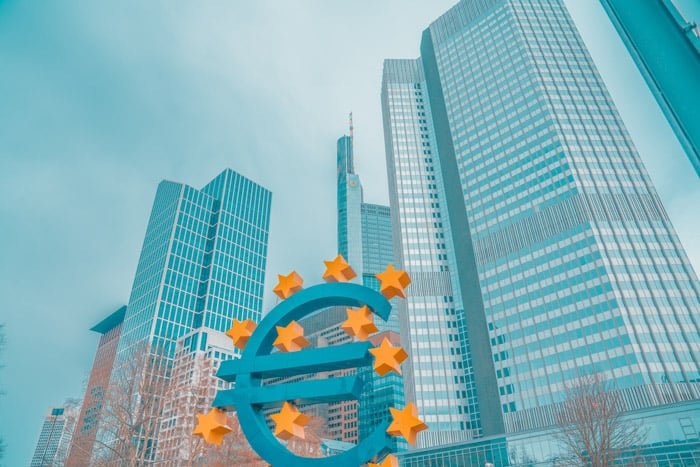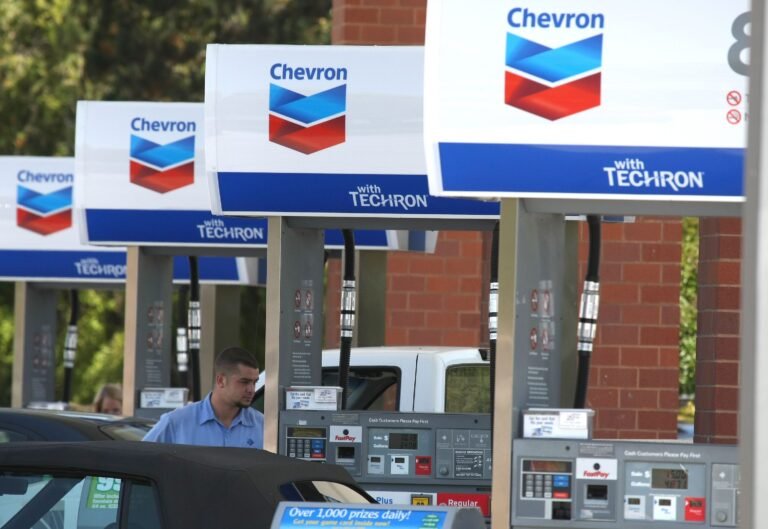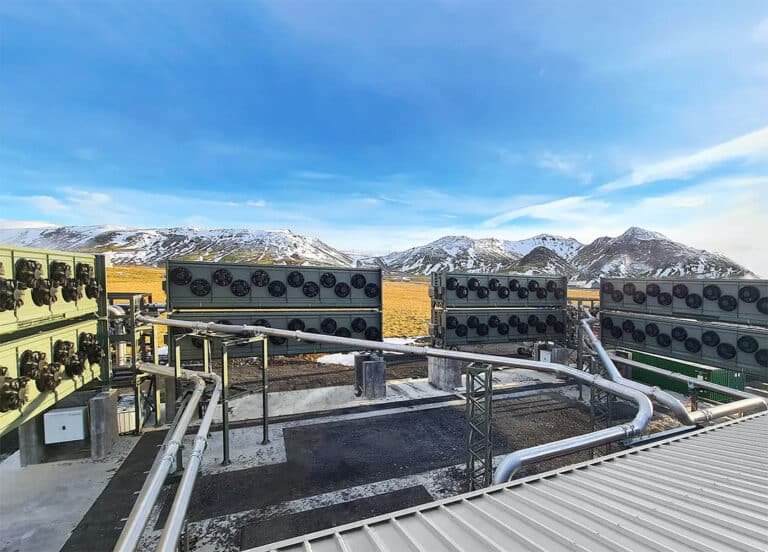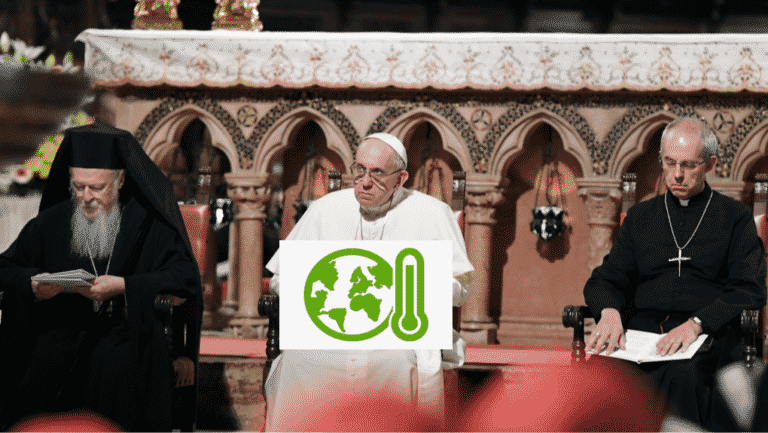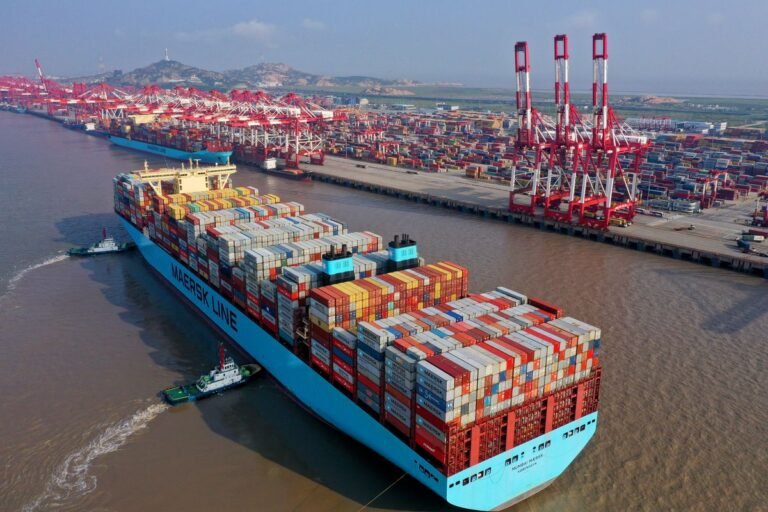European Central Bank to Examine Banks’ Expose to Climate Risk
Chevron Triples its Low-Carbon Investment to $10 Billion
Chevron recently announced a $10 billion dollar investment into low carbon business initiatives. Half of that budget will be spent on reducing emissions from fossil fuel initiatives.
Here is the breakdown of the investment:
-
- $3 billion for Carbon capture and offsets
- $2 billion on reducing greenhouse gas
- $3 billion on renewable fuels
- $2 billion on hydrogen energy
To achieve this Chevron will increase:
-
- Renewable fuels production to 100,000 barrels per day
- Renewable natural gas output to 40 billion British thermal units (BTUs) per day.
- Hydrogen production to 150,000 tonnes per year to provide industrial, power, and heavy-duty transportation clients
- Carbon capture and offsets to 25 million tonnes per year.
This $10 billion investment’s goal is to reduce greenhouse gas emissions from its oil and gas production by 35 percent by 2028.
The company will be releasing its climate report later this year and will revisit its net-zero goal at that time.
Critics have stated that Chevron’s focus is on offsetting emissions from oil and gas production rather than lowering oil output.
European oil companies have set the benchmark for the transition away from fossil fuels by investing more in renewables and meeting 2050 emission objectives.
Chevron CEO, Michael Wirth, said the only a small percentage of the company’s shareholders presently support a European oil company strategy of investing in less lucrative solar and wind power.
US-based Chevron, Exxon, and Occidental Petroleum have also pledged to cut carbon emissions by supporting carbon capture and storage and doubling down on oil.
Commercial Real Estate Investment Firm to Offset Carbon Internally
The commercial real estate industry contributes between 30% and 40% of global carbon emissions each year.
To combat the amount of carbon being pumped into the atmosphere, a property trust has chosen to make an investment this week that could revolutionize the commercial real estate industry.
Standard Life Investments Property Income Trust (SLI) purchased 1,447 hectares (3,575 acres) of land in Cairngorm National Park in Scotland.
The objective is to plant 1.5 million trees to offset carbon emissions from its property portfolio. Their market cap is currently listed as £275 million.
While commercial real estate companies have been looking into energy-efficient retrofitting, solar installations, and carbon credit purchases, SLI has taken carbon offsetting to the next level by offsetting their own carbon themselves.
They purchased the property for £7.5 million, with the cost of planting trees covered by grants.
SLI is paying approximately £38 per ton of carbon (about $53 US dollars per ton). Since the global carbon market is expected to boom to $22T by 2050, it’s safe to say that SLI sees potential for growth and profits. The project is expected to offset 195,630 tons of carbon until 2060 – representing 73% of the company’s carbon output.
In addition to this land purchase, SLI installed a major Photo Voltaic (PV) solar panel scheme on one of its assets. The panels are expected to save the equivalent of 229 tons of carbon in the first year. SLI is also looking to roll out additional solar panel installations across its portfolio.
With environmental, social, and governance (ESG) issues at the forefront of SLI’s mind, Jason Baggaley – SLI’s Manager – has recently sold several older assets, utilizing funds to invest within more sustainable properties.
Reducing carbon emission continues to be at the top of consumer, company, and government agendas. SLI’s forward-thinking initiatives should present a lucrative opportunity for years to come. If more commercial real estate companies follow suit, carbon emissions will drop, revenues will increase, and the environment will improve.
Could the price of oil hit $200 a barrel because of climate change?
Oman’s energy minister warned conference attendees recently “Recommending that we should no longer invest in new oil… I think that’s extremely dangerous.”
His biggest fear is that if we abruptly stop investing in fossil fuel, “there will be energy starvation, and the price of energy will just shoot (up).”
The United States Energy Information Administration’s long-term projection issued in February anticipates crude oil to hit $89 in the US in 2030 and $185 by 2050.
They admit that several factors could impact these figures, including other supply sources, access to renewable energy, and emissions taxes.
According to S&P Global Platts, OPEC is worried. Their concern is that an increase in oil prices could affect market volatility and threaten oil project investments.
Their concerns haven’t seemed to stop the push for net-zero emissions. Carbon pricing is taking off as global carbon markets continue to expand. In fact, countries that represent 70% of the global gross domestic product are committed to meeting international climate objectives – with all eyes set on eliminating emissions.
The Minister for Industry and Advanced Technology in the United Arab Emirates, Sultan al-Jaber, is not as concerned. “Even in the most ambitious energy transition scenario, oil and as will still be needed for many decades to come.” He went on to say that the Middle East’s reserves account for many of the least carbon-intensive barrels globally.
International Energy Director Fatih Birol said, “It’s an interesting race. Unless everybody finishes the race, nobody wins the race.”
If the oil industry can find ways to utilize its resources to achieve net-zero emissions goals, it may very well flourish — all while helping the world meet its 2050 deadline. With a bit of ingenuity and some unexpected partnerships, concerns of massive increases may become a thing of the past.
Moody’s Warns Carbon Intense Industries Will Be Hit Hardest
Moody’s report on the economic impacts of carbon pricing confirms what most thought: carbon-heavy producers and carbon-heavy consumers will be negatively impacted. However, those investing in carbon-neutral technologies will be poised for growth.
There are two distinct and practical ways that carbon pricing takes place:
• Tax on emissions put in place by governments; or
• Through carbon markets where carbon credits are bought and sold
The practice of carbon pricing has been endorsed by the International Monetary Fund, the World Bank, and the Organization of Economic Co-operations and Development. Currently, 40 national and 25 sub-national jurisdictions have put a price on carbon, with 21.5% of global carbon emissions covered by carbon pricing instruments. This is up from 15.1% in 2020.
Even China – the largest carbon emitter in the world – created its own carbon market. The global carbon market is expected to reach $22 trillion by 2050.
In a press release, Moody’s Vice President and Senior Analyst Anushka Shah said, “In an indication of growing commitment to decarbonization and mid-century net-zero emissions targets, policymakers globally are increasingly advocating carbon pricing systems.”
Right now, the average price for emissions is $2 per ton of carbon – which is not quite at the $25 per ton required per the Paris climate agreement. But governments and businesses are working on getting there. If anything, this report by Moody’s shows, it is truly in their best interest to do so.
According to the Federal Reserve, the total economic cost of a business-as-usual approach to climate change will be $2 trillion more than meeting the Paris targets by 2050 and $50 trillion more by 2100. So, while carbon pricing may seem costly to governments and industries now, the cost of not doing so is far more expensive in the long run.
No matter the economic impacts of carbon pricing, Moody’s said they are preferable to what will happen if the world fails to combat climate change. “The cost of inaction on controlling emissions will accumulate with much greater social and economic costs in the future.”
World’s Largest Carbon-Removal Machine Makes Debut
There is no question about it: carbon must be removed from the atmosphere to stop global warming. This can be achieved through carbon offsetting, which, though highly effective, is a longer process, and through “direct air capture” (DAC).
If you are wondering what DAC is, you are not alone. DAC is essentially massive CO2-vacuums that suck carbon out of the air immediately.
The largest DAC plant in the world made its debut in Iceland this week and is operated by the Swiss engineering startup Climeworks. The plant, known as Orca, will draw in a volume of emissions equal to approximately 870 cars annually. It will reach global capacity by about 50%, adding a dozen smaller plants throughout Europe, Canada, and the US.
Each plant is composed of eight container-sized boxes that use fans to pull in air. CO2 is then filtered out, mixed with water, and pumped into underground wells, where after some time, it turns into stone.
The objective is to sell the captured CO2 stones to manufacturers that can use them for raw materials. The price per carbon unit seized and then converted is currently unknown.
Before launching Orca, Climeworks signed a deal with insurance company Swiss Re for an undisclosed volume of carbon offsets. Though the price per ton hasn’t been made public, Swiss Re press release stated it was “several hundred dollars.”
Though DAC provides an excellent alternative to carbon offsetting, critics aren’t so sure. The cost of building and operating these machines can be exponential. Plus, to be truly effective, the DAC industry will need to remove nearly 10 million tons of carbon per year by 2030, which is a long way away.
With more premium offset projects entering the global carbon market, offsets are uniquely positioned to benefit companies and farmers alike. Still, DAC is an essential aspect of combating climate change. It can remove carbon at a faster rate while providing companies with eco-friendly materials.
Combined, DAC and carbon offsetting have the potential to make a real difference, helping the world achieve net-zero goals.
Walmart Issues $2 Billion Green Bonds
Walmart recently issued the largest green bond in the United States – worth $2 billion.
The world’s largest retailer has released its first debt with sustainability credentials. This is amid a period of stepped-up efforts to curb carbon emissions, promote recycling, and clean up its supply chain.
One of the projects funded by bonds might be a wide range of environmentally friendly projects, including wind turbines, solar power, energy-efficient refrigerators, electric vehicles, and trash reduction.
It’s part of a $7 billion investment that funds a $2 billion 10-year green bond to support a tender offer.
Walmart has set a goal of achieving zero emissions by the year 2040, and it also plans to lower emissions from its supply chain by a billion metric tons by the year 2030.
James Rich, Senior Portfolio Manager with Aegon Asset Management, stated “It certainly seems like they’re serious about taking a sustainability leadership role within the retail space,”. He went on to further state “I don’t know how other retailers will be able to avoid making similar commitments and changes.”
The gauntlet has been thrown down as Amazon issued a $150M ESG bond earlier in May and Alibaba also raised its first sustainability debt in Feb.
According to Bloomberg, the issuance of “Green” Bonds by firms and governments throughout the world reached $691 billion so far in 2021.
According to banking experts, the $1 Trillion dollar sales mark is set to be broken before the end of the year.
Top Christian Leaders Plead for World to Fight Climate Change
For the first time, Pope Francis, the Archbishop of Canterbury, and the Orthodox Christians’ leader issued a joint statement requesting COP26 summit delegates to take immediate action against climate change.
The COP26 climate summit is scheduled to take place in Glasgow, Scotland, this November.
“As leaders of our Churches, we call on everyone, whatever their belief or worldview, to endeavor to listen to the cry of the earth and of people who are poor, examining their behavior and pledging meaningful sacrifices for the sake of the earth which God has given us.”
They also urged people to focus on long-term sustainability rather than short-term gains while keeping the poor in mind.
“Technology has unfolded new possibilities for progress but also for accumulating unrestrained wealth, and many of us behave in ways which demonstrate little concern for other people of the limits of the planet.”
With the global carbon market expected to reach $22T by 2050, the opportunity to positively impact the environment and the world’s most vulnerable populations is endless. In fact, both are a driving force behind Amazon’s new Agroforestry and Restoration Accelerator project, which was announced this week.
In partnership with The Nature Conservancy, their goal is to help 3,000 small farmers in Brazil produce sustainable agriculture. Over 10 million metric tons of carbon will be removed from the atmosphere, and 50,000 forest acres will be restored. The carbon offsets produced will go towards Amazon’s emissions.
Once additional investments are made, these projects can impact over 40,000 farmers, sparking socio-economic development worldwide. They can also help remove additional carbon from the atmosphere through agroforestry, restoration, eco-friendly fuels, and more.
The Pope, Archbishop, and Orthodox Leader went on to say that “Extreme weather and natural disasters reveal afresh to us with great force and at great human cost that climate change is not only a future challenge, but an immediate and urgent matter of survival.”
Carbon markets may very well be the solution these leaders, and the world, are looking for.
Amazon Rolls Out Rainforest Carbon Offset Project
Amazon has announced a carbon removal project in the Brazilian Rainforest in partnership with The Nature Conservancy (TNC). The project will help 3,000 small farmers produce sustainable agriculture through reforestation and regenerative agroforestry.
Known as The Agroforestry and Restoration Accelerator, Amazon and TNC anticipate it will remove up to 10 million metric tons of carbon from the atmosphere through 2050, which will help offset Amazon emissions.
The Pará state has been selected as the project’s location. It is home to 9% of the world’s tropical forest, which at 40%, has experienced the highest loss rate in Brazil.
Amazon’s funds will provide direct technical assistance to farmers. At the same time, TNC and other environmental nonprofits will support farmers on the ground. They hope to restore 50,000 acres. Small farmers will also learn how to diversify production and reach new markets to advance economic development.
Amazon, a co-founder, and signatory of the Climate Pledge is committed to reaching net-zero emissions by 2040. To do so, they are focused on improving the carbon credit market, and this project is a means to do just that.
By improving the infrastructure related to carbon credits, Amazon believes it can drive the carbon market further as a quantifiable, ongoing, and socially beneficial investment. They plan to start through satellite imagery, advanced algorithms, and additional supervision.
Right now, the global carbon market is poised to reach $22T by 2050.
Senior Scientist at Amazon James Mulligan told Mongabay that Amazon believes there are “…more than 40,000 farmers who could benefit from a program like this in the region, and that would take a significant investment. We will set up the basic structure of the project and set up the program to scale. In order to scale, it needs additional investments which could come from different sources.”
As such, the collaborative partnership between Amazon and TNC is only the beginning. The announcement of this project is a win for Amazon, NGOs, farmers, investors, and quite frankly, the global carbon market.
Global Shipping Shakeup
The International Chamber of Shipping backed plans for a global surcharge on carbon emissions to fund the shift towards climate-friendly fuels. Their plan, which will be proposed to the United Nations, requires all international vessels of a specific size to pay per metric ton of carbon they emit.
The proposal has been well received by environmental groups and the International Maritime Organization, a U.N. body. If this surcharge passes, it will impact over 80% of the world’s merchant fleet. As of now, a price has not been set.
Director of Global Transportation at the Environmental Defense Fund, Aoife O’Leary, said, “We will know they are serious about real progress when they embrace a level of ambition consistent with what climate-vulnerable island nations have already proposed.”
Two nations with large shipping fleets and vulnerable territories (The Marshall Islands and The Solomon Islands) have suggested the surcharge starts at $100 per ton.
The Secretary-General of International Chamber of Shipping, Guy Platten, said, “This proposal sets out how to practically create a market-based measure for the global shipping industry, to quickly move towards an effective price. Rather than make guesses for PR purposes, we want to come to a number that will decarbonize the sector without disenfranchising huge proportions of the developing world on the way.”
Currently, the shipping industry accounts for nearly 3% of greenhouse gas emissions. That percentage is expected to increase over the next several years.
The International Chamber of Shipping aims to invest the money from this surcharge into a climate fund that would subsidize clean fuel alternatives. It is important to note that they oppose piecemeal regional measures, such as the current tariff being discussed within the EU.
Whether this global surcharge or the regional one being proposed by the EU is enacted, it is safe to say there is a drive for change. With these proposals on the table, and the global carbon offsetting industry expected to hit $22T by 2050, a net-zero future seems possible.

